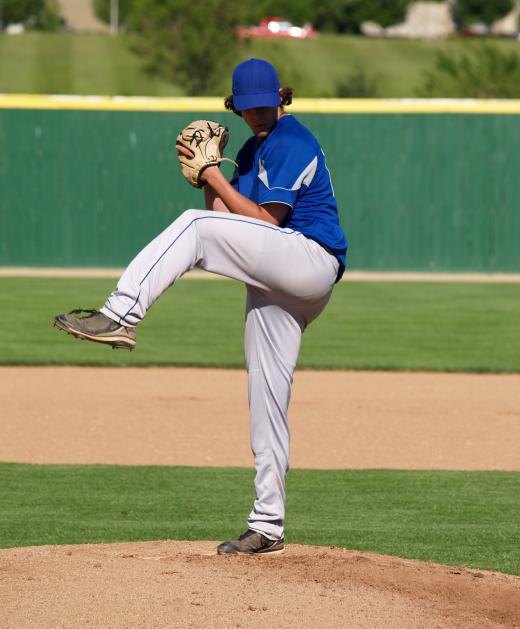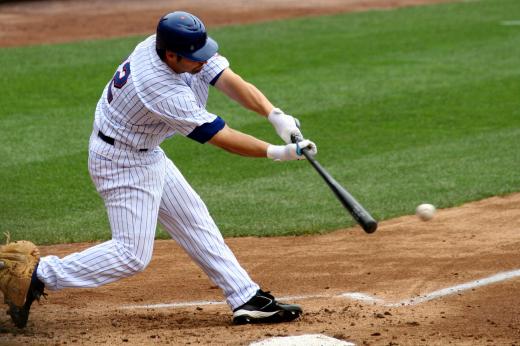At Sports&Hobbies, we're committed to delivering accurate, trustworthy information. Our expert-authored content is rigorously fact-checked and sourced from credible authorities. Discover how we uphold the highest standards in providing you with reliable knowledge.
What is a Spitball?
During the earliest days of professional baseball, games were primarily pitchers' duels, which meant the focus was primarily on defensive fielding and base running, not on crowd-pleasing home runs. In order to get as much of an advantage over batters as possible, many pitchers would use foreign substances such as saliva, pine tar, phonograph needles, dirt, or sandpaper to affect the way the baseball behaved during a pitch. Regardless of the actual material used, this form of ball doctoring became known as a spitball, although other sources may use other names such as mud ball or shine ball.
There were no official restrictions on the use of a spitball prior to 1920. Although the practice was strongly discouraged by many officials, pitchers were free to apply substances ranging from tobacco juice to petroleum jelly to a baseball prior to pitching. The surface of the ball could also be scuffed with sandpaper, or small phonograph needles could be inserted into the seams for a better grip. Because the majority of pitchers used liberal amounts of tobacco spittle or saliva along with other ingredients, however, the pitch itself earned the name spitball.

There are several reasons why a pitcher would find a spitball so appealing to throw. Applying a slick coating to a regulation baseball would create an imbalance, causing the pitched ball's arc and speed to be much more unpredictable. A deceptive pitch such as a curve ball or sinker would be even more deceptive when thrown as a spitball. Many batters struck out repeatedly when facing an experienced spitball pitcher. Only the legal off speed pitch known as a knuckle ball would even come close to the effectiveness of a spitball.

If the right substances, primarily dirt and tobacco juice, were used in the formation of a spitball, the ball would also become nearly impossible to see. Instead of watching a standard white ball leave the pitcher's hand, a batter might only catch a glimpse of a dirt-colored ball as it sailed through the strike zone. There is even some speculation that a darkly colored spitball may have been partially responsible for a batter's death, since he could not see the doctored ball being thrown. Incidents such as this led to a change in the major league rule book in 1920, effectively banning any use of a ball doctored with a detectable foreign substance.

Even though the spitball was deemed illegal in 1920, some pitchers were still allowed to throw it until they retired from baseball. Certain pitchers in the modern era, most notably Gaylord Perry and Phil Niekro, have been accused of adding substances such as sweat, petroleum jelly or liquid glue to baseballs during games. The substances may have been hidden under the brim of their caps or in the zipper area of their pants, two places less likely to be searched after a spitball accusation. Catchers have also been known to remove any evidence of a spitball before handing over the baseball to an official for inspection.

Far from the world of professional sports, there is a completely different definition of spitball. Many enterprising youths have discovered the power of combining saliva with small pieces of rolled paper, then projecting the soggy result with the aid of a drinking straw or rudimentary slingshot. This sort of spitball often lands in the hair of an unwitting victim, or clings to a wall or chalkboard. Penalties for the creation and delivery of a spitball can be quite severe in many classrooms, so practitioners should consider themselves warned.
AS FEATURED ON:
AS FEATURED ON:














Discussion Comments
How do you play spit ball?
Post your comments